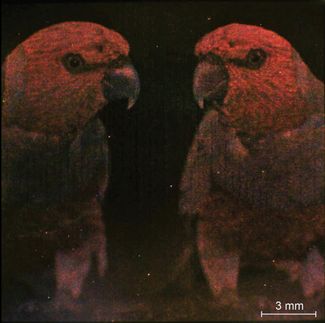Producing clean water in an emergency
McGill researchers develop a new and inexpensive way of filtering water using silver nanoparticles
Disasters such as floods, tsunamis, and earthquakes often result in the spread of diseases like gastroenteritis, giardiasis and even cholera because of an immediate shortage of clean drinking water. Now, chemistry researchers at McGill University have taken a key step towards making a cheap, portable, paper-based filter coated with silver nanoparticles to be used in these emergency settings.
“Silver has been used to clean water for a very long time. The Greeks and Romans kept their water in silver jugs,” says Prof. Derek Gray, from McGill’s Department of Chemistry. But though silver is used to get rid of bacteria in a variety of settings, from bandages to antibacterial socks, no one has used it systematically to clean water before. “It’s because it seems too simple,” affirms Gray.
Prof. Gray’s team, which included graduate student Theresa Dankovich, coated thick (0.5mm) hand-sized sheets of an absorbent porous paper with silver nanoparticles and then poured live bacteria through it. “Viewed in an electron microscope, the paper looks as though there are silver polka dots all over,” says Dankovich, “and the neat thing is that the silver nanoparticles stay on the paper even when the contaminated water goes through.” The results were definitive. Even when the paper contains a small quantity of silver (5.9 mg of silver per dry gram of paper), the filter is able to kill nearly all the bacteria and produce water that meets the standards set by the American Environmental Protection Agency (EPA).
The filter is not envisaged as a routine water purification system, but as a way of providing rapid small-scale assistance in emergency settings. “It works well in the lab,” says Gray, “now we need to improve it and test it in the field.”
The research was funded by the National Sciences and Engineering Council of Canada (NSERC) and the work is part of the NSERC Sentinel Bioactive Paper Network.
The team’s findings were recently published in the Journal of Environmental Science & Technology.
Most read news
Other news from the department science
These products might interest you

NANOPHOX CS by Sympatec
Particle size analysis in the nano range: Analyzing high concentrations with ease
Reliable results without time-consuming sample preparation

DynaPro Plate Reader III by Wyatt Technology
Screening of biopharmaceuticals and proteins with high-throughput dynamic light scattering (DLS)
Efficiently characterize your sample quality and stability from lead discovery to quality control

Eclipse by Wyatt Technology
FFF-MALS system for separation and characterization of macromolecules and nanoparticles
The latest and most innovative FFF system designed for highest usability, robustness and data quality

Get the chemical industry in your inbox
By submitting this form you agree that LUMITOS AG will send you the newsletter(s) selected above by email. Your data will not be passed on to third parties. Your data will be stored and processed in accordance with our data protection regulations. LUMITOS may contact you by email for the purpose of advertising or market and opinion surveys. You can revoke your consent at any time without giving reasons to LUMITOS AG, Ernst-Augustin-Str. 2, 12489 Berlin, Germany or by e-mail at revoke@lumitos.com with effect for the future. In addition, each email contains a link to unsubscribe from the corresponding newsletter.




















































